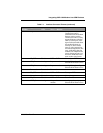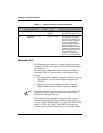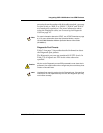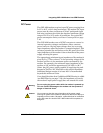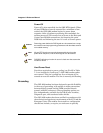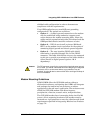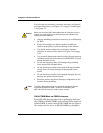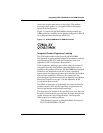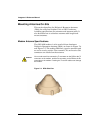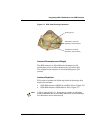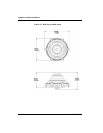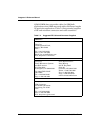
Integrating GSP-1620 Modems into OEM Products
80-99208-1 Rev. D 7-19
shielded cable configuration in order to demonstrate
compliance with the requirements.
Your OEM application may need different grounding
configurations. The options are as follows:
• Option 1 — A chassis ground connection to the modem
may be established using conductive support posts/
screws between the modem mounting holes, where the
solder mask is exposed on both sides of the board, and the
OEM-provided chassis (metallic enclosure or base).
• Option 2 — DNI (do not install) resistors (R216 and
R217) on the modem circuit card allow for the option of
connecting digital ground and chassis ground together.
• Option 3 — The user interface DB-25 cable shield
termination is provided through Pin 1 of the DB-25
connector. The cable shield drain wire may be connected
to this pin to provide a termination of the cable shield to
either chassis or digital ground (options 1 & 2
dependency).
Caution
The RF connector ground is the same as the signal and power ground.
As an OEM, you should understand this when designing an integrated
product for use in environments where surge protection may be
required. You should also be aware of this fact to avoid ground loops in
the final installation.
Modem Mounting Guidelines
QUALCOMM offers the GSP-1620 modem without a
mechanical enclosure, anticipating that OEMs will integrate
and package the modem into an enclosure or cabinet
appropriate to the end-user’s application. The enclosure must
shield the GSP-1620 modem from direct impacts,
precipitation, vibration, acoustic noise, and particulates.
The GSP-1620 modem has six mounting holes sized for M3
screws. All six mounting locations of the modem must be
fastened to a rigid structure to meet the vibration and shock
requirements specified in Integrating Modems into Products
on page 7-2.



